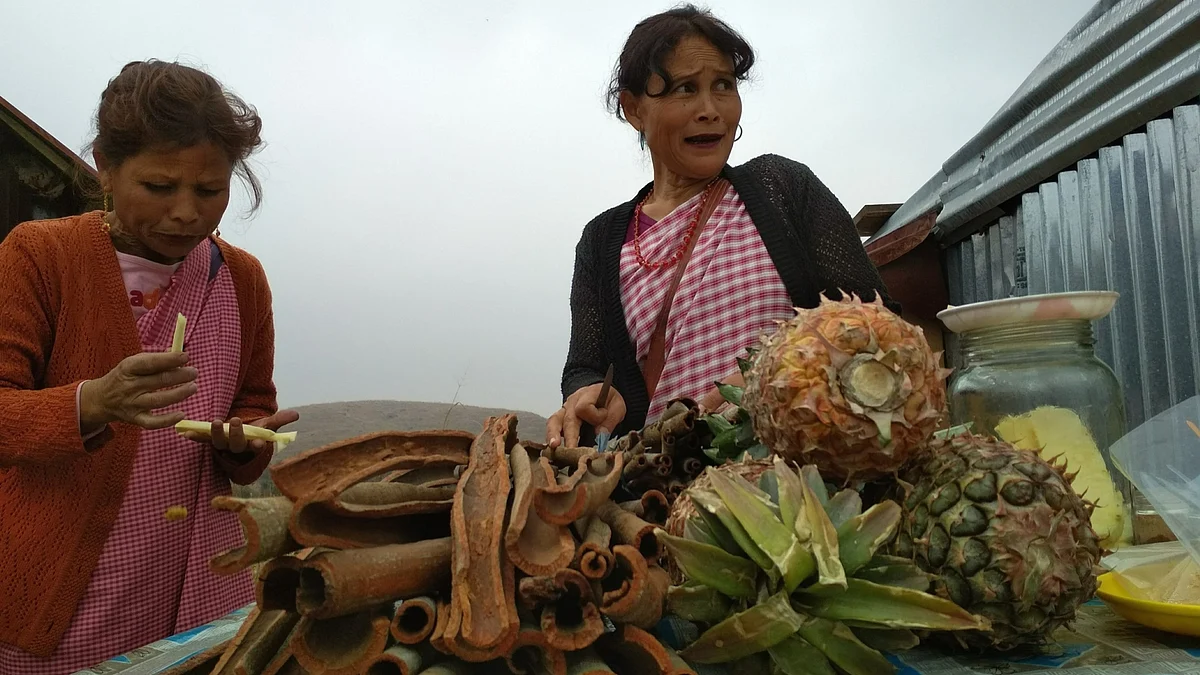Chasing Dark Clouds and Ghosts in Magnificent Meghalaya
If there truly are spirits lingering, as my friend says, it makes sense. Why would anyone want to leave Meghalaya?

advertisement
Meghalaya, abode of the clouds, is also home to some kind of mystique. While driving around in its magnificent hills, one cannot help but wonder what enigmas lie within. It’s undoubtedly picturesque, but as grey clouds weave together against the lush grassland, the scene forming is ominous.
Marlyne, my Khasi friend and a native of Shillong, seems convinced there are spirits lingering outside her childhood home.
Every morning on his way to work, her father felt like he was being pursued – but he knew better than to turn around. When I glance out of the window of one of Shillong’s many cafes, and see eerie clouds looming over menacingly, I find myself believing her.
Its spooky undercurrent aside, Shillong is an energetic city that knows good fashion. From young to old, the women look dazzling, dressed in the traditional Khasi attire (jainsem), which they pair with matching cardigans and heels. The city’s cosy cafes, quaint cottages, and roads busy with Maruti 800s, paint it in a nostalgic Eastman colour.
At its heart is the bustling Police Bazaar – full of trinkets, lal cha (red tea) and momo stalls – where one could get lost in a sea of hawkers and roadside shops.
Meghalaya’s Shakespearean Moors
Drive away from Shillong, and the eerie undercurrent reiterates itself.
Sohra is said to be the first town where the British Christian missionaries interacted with the local Khasi tribes, evidence of which is apparent in the hundreds of grave sites peppered in between ghost towns.
Some of the tombstones date back to the 1800s, some, unnamed and uncared for, lie uprooted on the side of the hill. Camouflaged among these graves lie the innocuous Khasi monoliths – erected centuries ago to honour slain heroes of the tribe.
Today, the lives of their successors go on around the burial grounds – a true cosmopolis of the living and the departed.
Popular stops in Sohra, and around, are the Garden of Caves in Laitmawsiang – a park with up to 14 waterfalls (if you’re there during the right season); the Mawsmai limestone caves – a short trek through a series of dimly lit caves (not for the faint-hearted); several magnificent waterfalls that dot the expanse of the east Khasi hills; and if it’s a clear day, a splendid view of Bangladesh across the border.
Living Root Bridges
Another must visit in Meghalaya are its world renowned living root bridges, made by entwining rubber fig tree roots, and allowing them to grow and become stronger over time.
The bridges take close to 15 to 20 years to strengthen, and some of the strongest ones are over a 100 years old. While there are several of these all over the Khasi and Jaintia hills, the oldest lies close to Cherrapunji town, and can only be reached by foot. A more easily accessible bridge – just about a 15-minute trek – is near Mawlynnong, Asia’s cleanest village.
From the vibrant patterns of the women’s jainsem, to how a simple plate of pork boil and rice is arranged – everything about Meghalaya is steeped in a culture of aesthetics. The villages are spotless, the cities are sparkling, the flowers are exquisite anytime of the year, and most importantly – the public toilets are impeccable!
Everything seems to be in its artistically accorded place. If there truly are spirits lingering, as Marlyne suggests, it makes sense – why would anyone want to leave Meghalaya?
(Suhasini Krishnan is a writer, TV buff and avid over-thinker. She tweets at @suwasknee.)